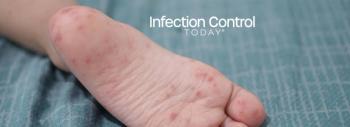
Healthcare-Associated Fungal Outbreaks
Outbreaks of healthcare-associated fungal infections have repeatedly been described over recent years, often caused by new or uncommon species. Candida auris, a recently described multidrug-resistant yeast species, is certainly the most worrisome species having caused several severe healthcare outbreaks of invasive infections, on four continents. Also, large nosocomial outbreaks due to uncommon fungal species such as Exserohilum rostratum and Sarocladium kiliense, were both linked to contamination of medical products, however the source of another outbreak, caused by Saprochaete clavata, remains unresolved. Furthermore, these outbreaks identified new populations under threat in addition to those commonly at risk for invasive fungal infections, such as immunosuppressed and intensive care unit patients. All of these outbreaks have highlighted the usefulness of a high level of awareness, rapid diagnostic methods, and new molecular typing tools such as whole genome sequencing (WGS), prompt investigation and aggressive interventions, including notification of public health agencies.
This review by
Until the last decades, only a small number of fungal pathogens such as Aspergillus, Candida, Pneumocystis jirovecii, and Mucorales have been involved in healthcare-associated fungal outbreaks. Furthermore, these outbreaks were limited to well-defined at-risk populations. Indeed, neutropenic patients, including patients treated for acute leukemia, severely ill patients during their stay in intensive care unit (ICU), and neonates hospitalized in neonatal ICU, were the main populations that suffered from these severe infections. The occurrence of sporadic episodes related to other fungal species and other less immunocompromised populations remained a rare phenomenon.
Nevertheless, several recent reports have highlighted the emergence of new healthcare-associated outbreak phenomena due to fungal species previously unknown or uncommon in clinical practice. Interestingly, these fungal outbreaks affected both weak patients and healthy individuals.
Thus, a new species of Candida, Candida auris, has been recently identified and is now considered a notorious healthcare-associated yeast causing invasive infections with high treatment rate failures. Diversely, during the past six years, rarely isolated fungi have been involved in healthcare-associated outbreaks; among these, Exserohilum rostratum and Sarocladium kiliense were related to contamination of medical products and represented a high public health threat. Also, others healthcare-associated outbreaks due to uncommon fungal species, such as Saprochaete clavata, are still unresolved as no source of contamination has yet been documented.
The researchers emphasize, I"ncreased vigilance and usage of advanced technologies are needed to rapidly identify the likely sources of these infections in order to efficiently guide epidemiological investigations and initiate appropriate control measures."
Source: Bougnoux ME, Brun S and Zahar J-R. Healthcare-associated fungal outbreaks: New and uncommon species, New molecular tools for investigation and prevention. Antimicrobial Resistance & Infection Control.2018;7:45
Newsletter
Stay prepared and protected with Infection Control Today's newsletter, delivering essential updates, best practices, and expert insights for infection preventionists.





